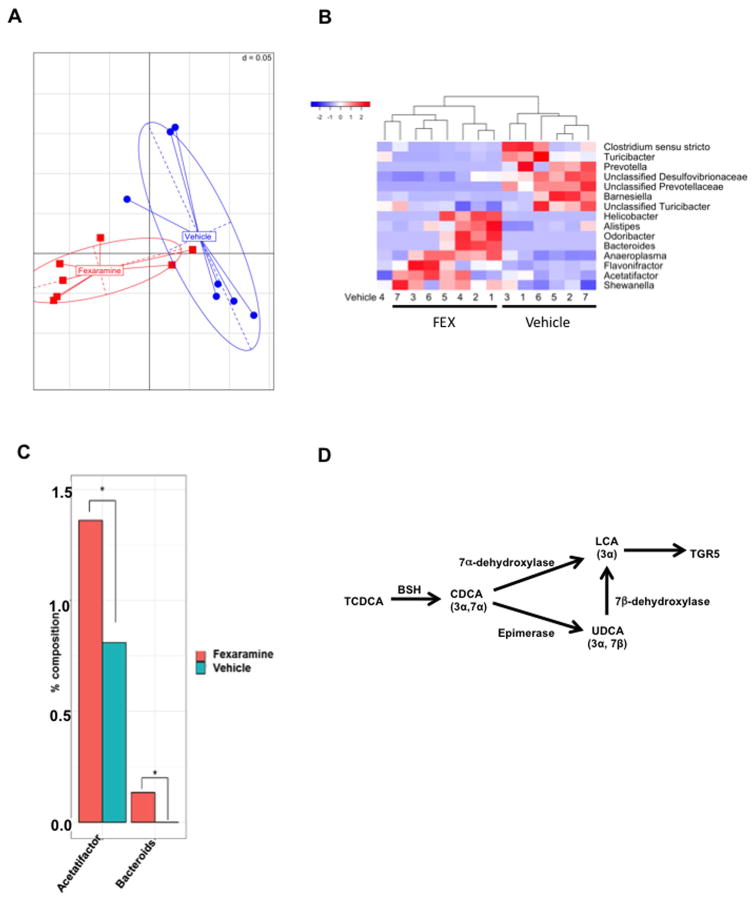Fig. 3.
Gut microbiota analysis. Gut microbes were extracted according the described methods after FEX treatment. FEX significantly altered the composition of the gut microbiota. (A) Generalized unifrac analysis of the whole gut microbiota population between vehicle and FEX-treated mice. Generalized unifrac combines weighted and unweighted unifrac analysis to incorporate both abundant and rare taxonomies, respectively. Significance was obtained via the R package Adonis, which is a permutational multivariate analysis of variance that is designed for distance matrices. (B) Effect of FEX on the genera of the gut microbiome. Z-scores are used to illustrate significantly different genera (p ≤ 0.05) between vehicle and FEX-treated mice. Samples were allowed to cluster under the R package heatmap.2’s hclust function. The dendrogram shows related samples. (C) Two genera, Acetatifactor and Bacteroides, were shown to increase after FEX treatment. (D) Gut bacteria induce LCA production to stimulate TGR5 signaling. Bile salt hydrolase de-conjugates TCDCA to CDCA, which is converted to LCA by bacterial 7α-dehydroxylase. CDCA can be epimerized to UDCA, which is converted to LCA by bacterial 7β-dehydroxylase. LCA activates TGR5 in the intestine. An “*” indicates statistically significant difference (p ≤ 0.05) between treated vs. vehicle control.

